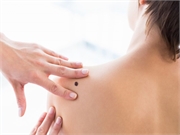Burden varies across states, with highest burden seen in Hawaii
TUESDAY, Feb. 18, 2020 (HealthDay News) — In the United States, the proportion of cases of cutaneous melanoma and age-standardized incidence rates attributable to ultraviolet (UV) radiation vary across states, but the burden is considerable in all states, according to a study published online Feb. 17 in the International Journal of Cancer.
Farhad Islami, M.D., Ph.D., from the American Cancer Society in Atlanta, and colleagues estimated the numbers, proportions, and age-standardized incidence rates of malignant melanomas attributable to UV radiation by calculating the difference between observed melanomas during 2011 to 2015 and expected cases based on rates among whites in Connecticut in 1942 to 1954.
The researchers found that during 2011 to 2015, the estimated number of melanoma cases attributable to UV exposure in the United States was 338,701 (91.0 percent of the total cases); 94.3 percent of UV-attributable cases occurred in non-Hispanic whites. The attributable proportion among non-Hispanic whites varied from 87.6 to 97.3 percent in the District of Columbia and Hawaii, respectively. Among non-Hispanic whites, the attributable age-standardized rate per 100,000 varied from 15.1 to 65.1 in Alaska and Hawaii, respectively, while in half the states, the attributable age-standardized rate per 100,000 was ≥23.3.
“The burden of UV-attributable melanoma is considerably high in all states, underscoring the need for broad implementation and enforcement of preventive measures across states to reduce UV radiation exposure from excessive sun exposure and indoor tanning, with priority for states with a higher burden,” the authors write.
Copyright © 2020 HealthDay. All rights reserved.








